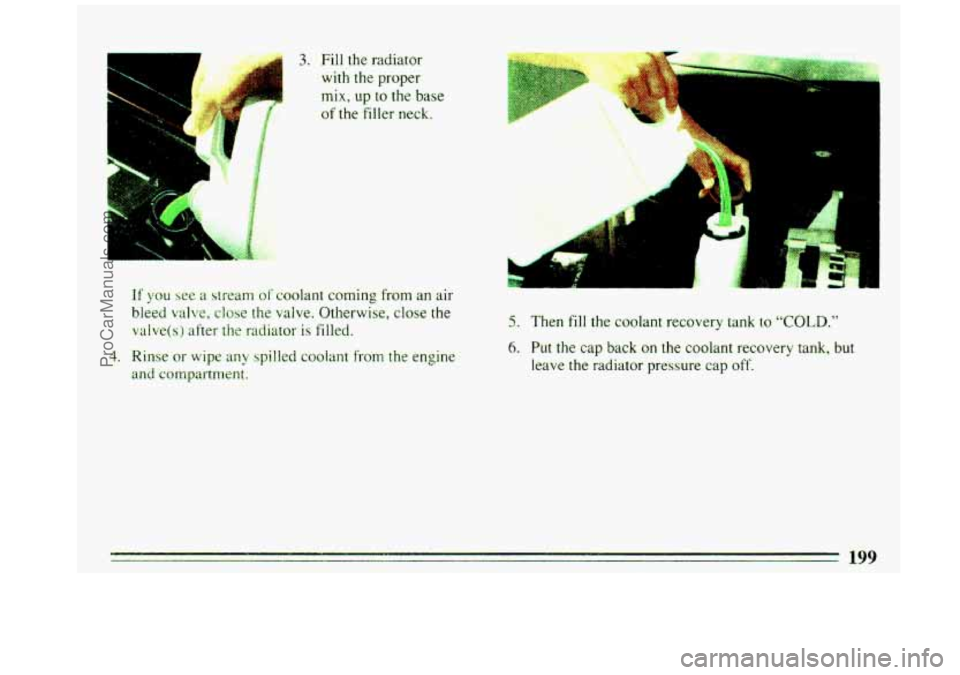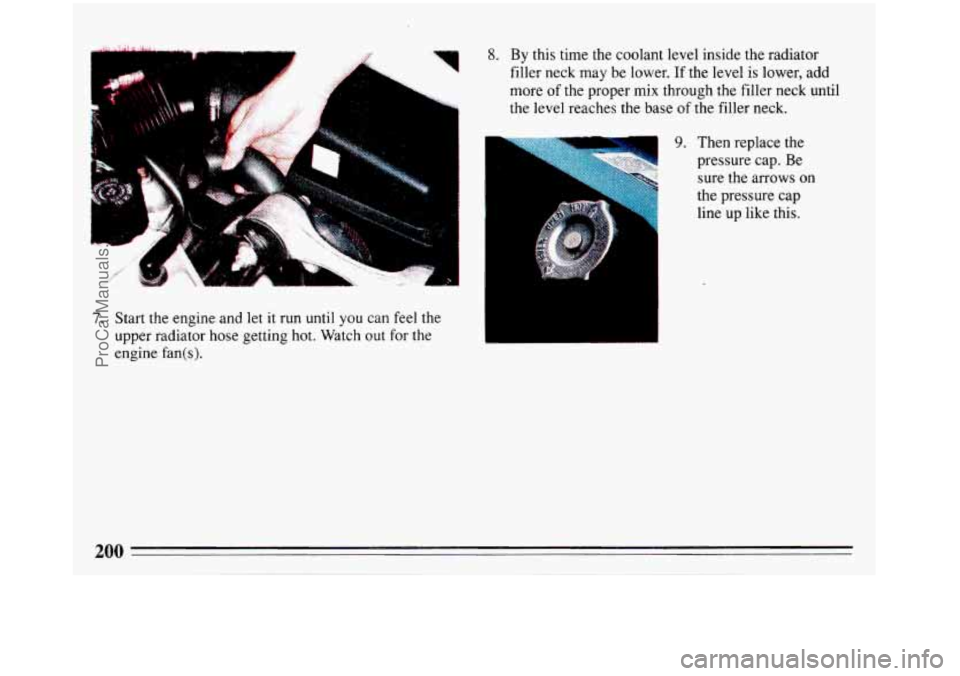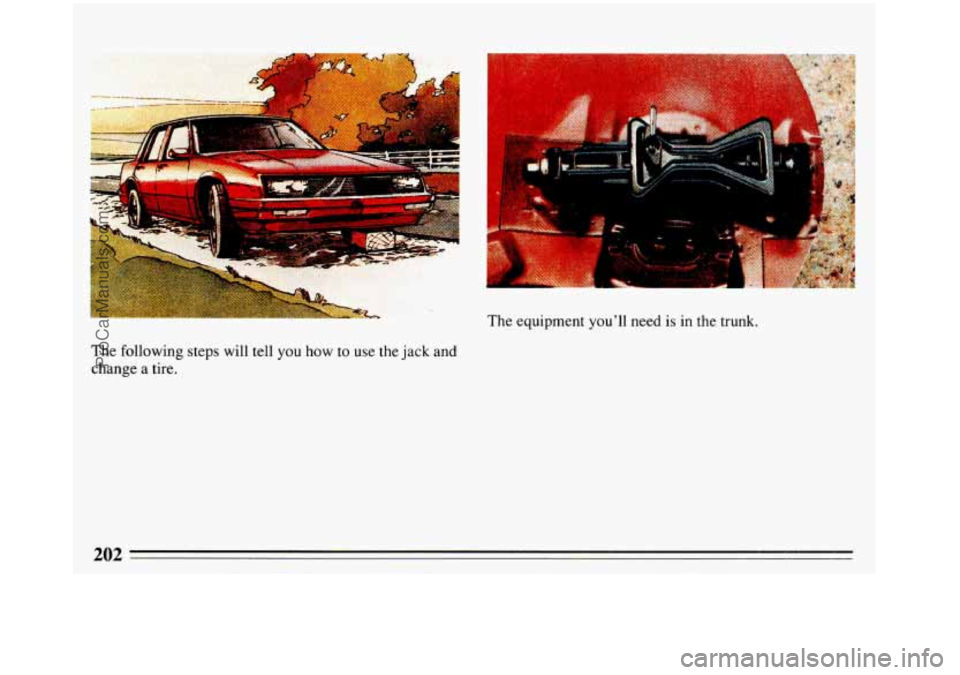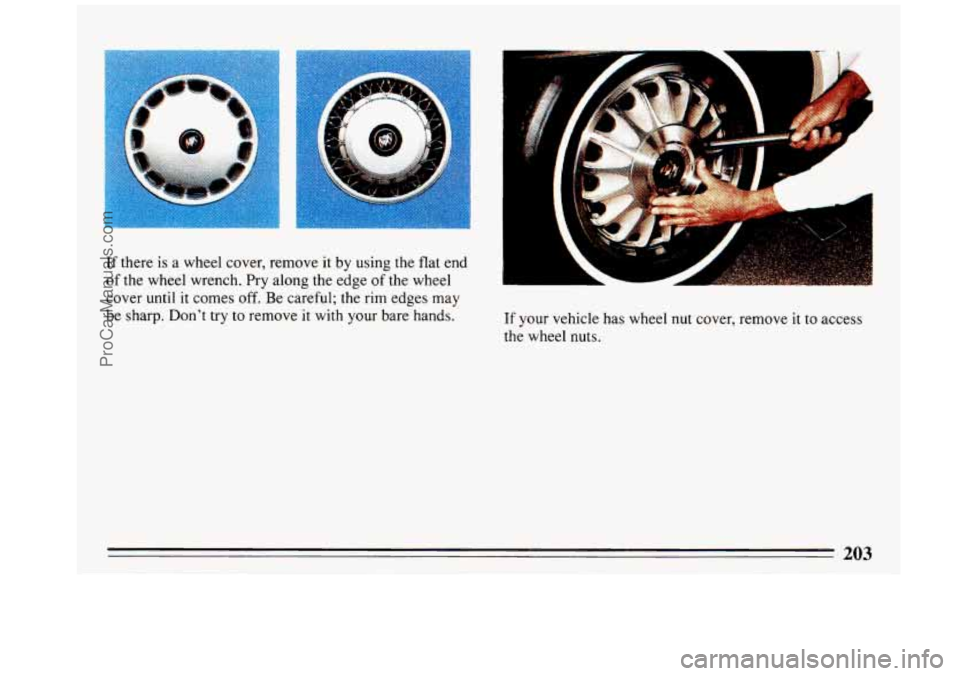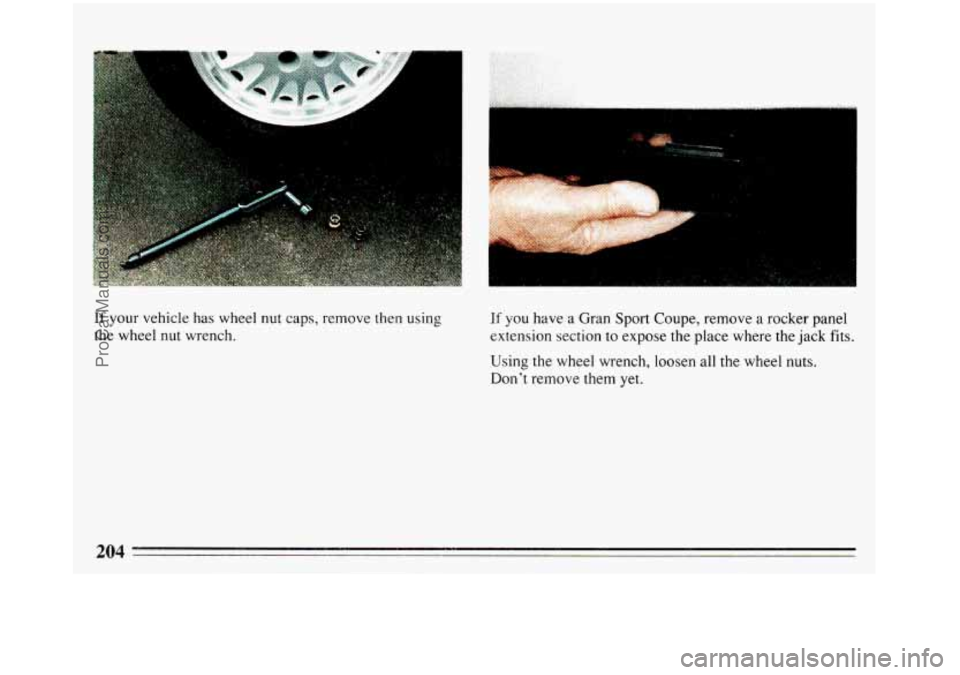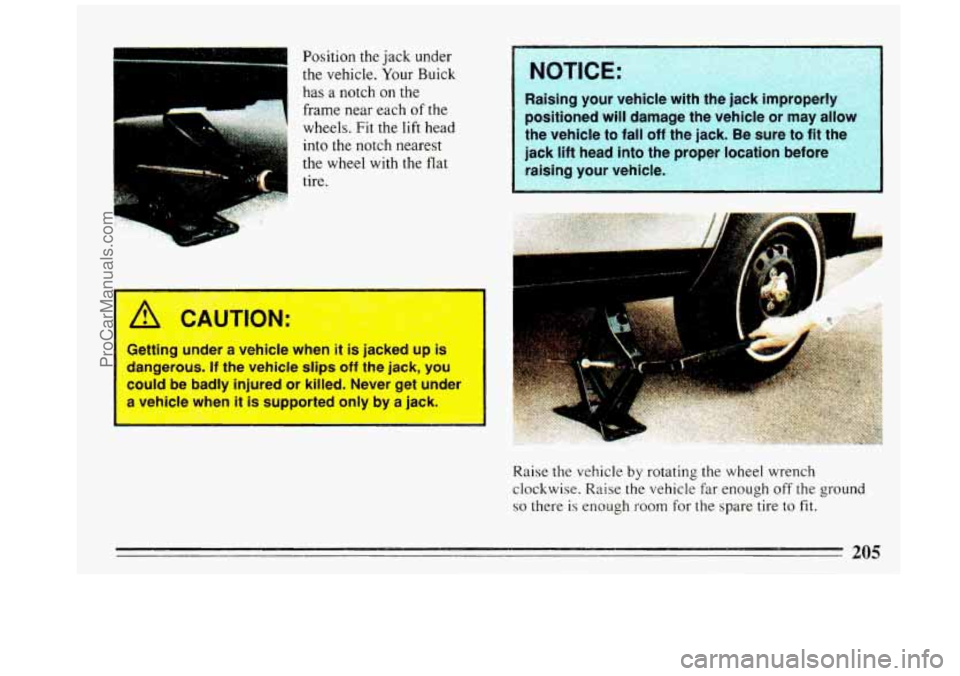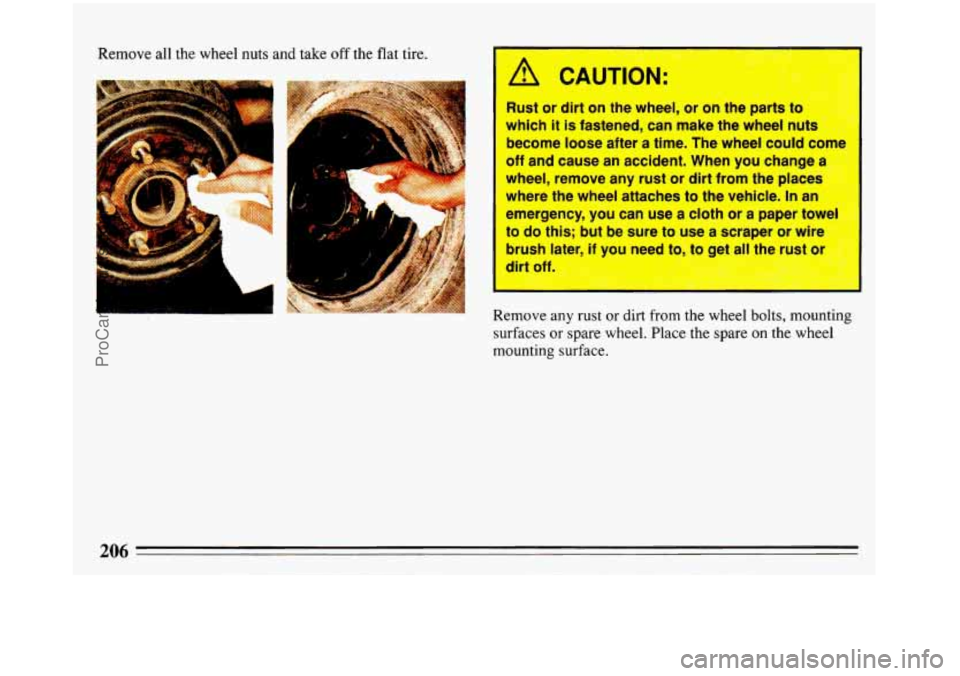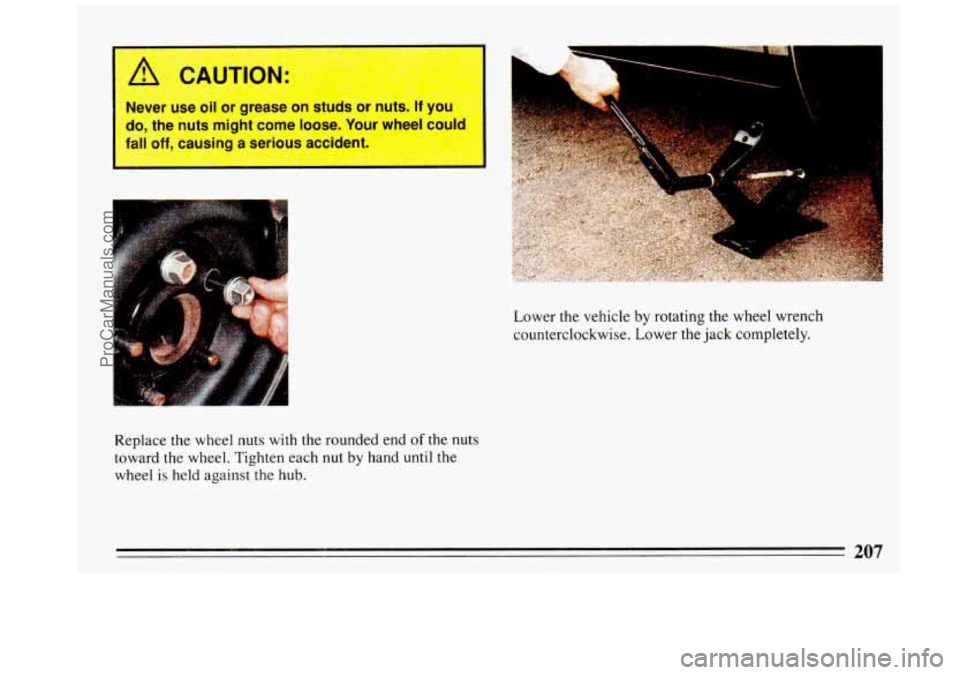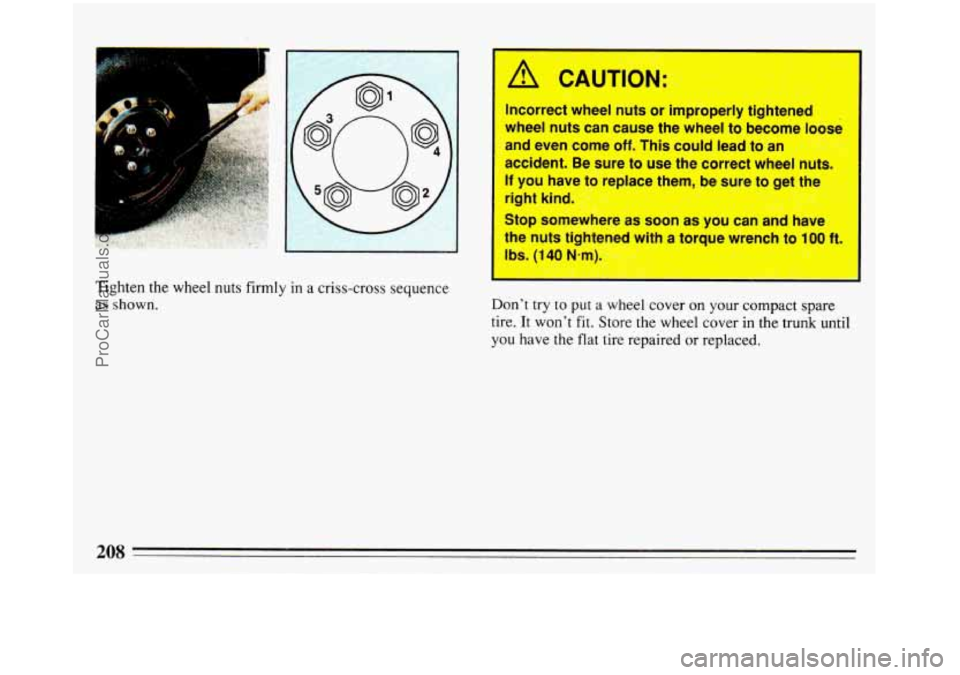BUICK REGAL 1993 Owners Manual
REGAL 1993
BUICK
BUICK
https://www.carmanualsonline.info/img/43/57693/w960_57693-0.png
BUICK REGAL 1993 Owners Manual
Trending: oil pressure, headlamp, service interval, jacking, jump start, washer fluid, belt
Page 201 of 308
3. Fill the radiator
with the proper
mix,
up to the base
of the filler neck.
If you see a stream of coolant coming from an air
bleed
valve, close the valve. Otherwise, close the
valve(s) after the radiator is filled.
4. Rinse or wipe any spilled coolant nom the engine
and compartment.
5. Then fill the coolant recovery tank to "COLD."
6. Put the cap back on the coolant recovery tank, but
leave the radiator pressure
cap off.
ProCarManuals.com
Page 202 of 308
I.
1
7. Start the engine and let it run until you can feel the
upper radiator hose getting hot. Watch out for the
engine fan(s).
8. By this time the coolant level inside the radiator
filler neck may be lower.
If the level is lower, add
more of the proper mix through the filler neck until
the level reaches the base
of the filler neck.
w 9. Then replace the
pressure cap. Be sure the arrows on
the pressure cap .. .L. ' .
line up like this.
200
.-
ProCarManuals.com
Page 203 of 308
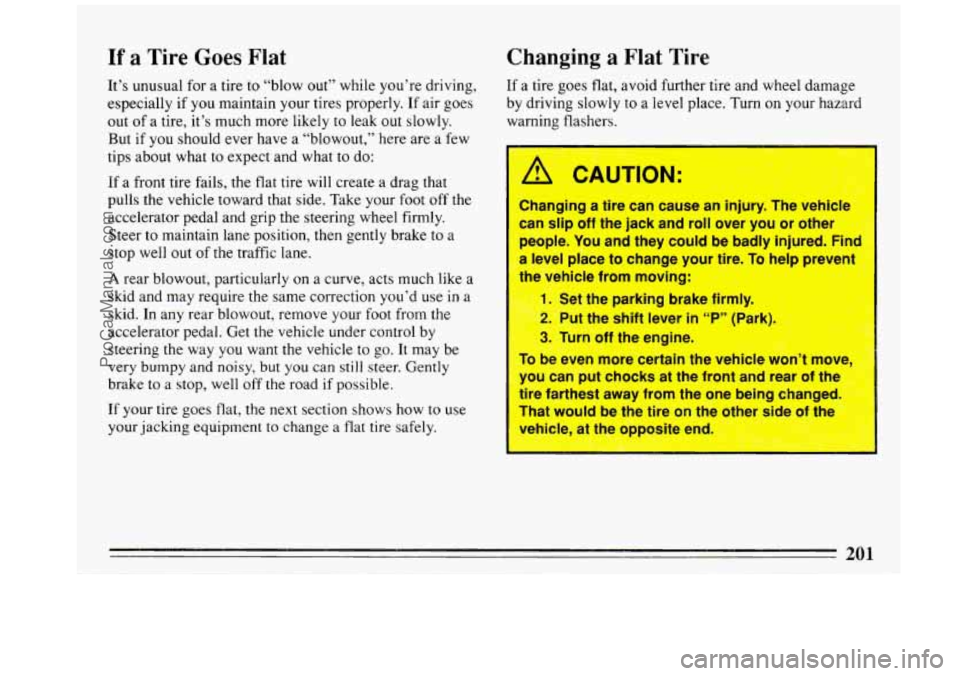
If a Tire Goes Flat
It’s unusual for a tire to “blow out” while you’re driving,
especially if you maintain your tires properly. If air goes
out
of a tire, it’s much more likely to leak out slowly.
But if
you should ever have a “blowout,” here are a few
tips about what to expect and what
to do:
If a front tire fails, the flat tire will create a drag that
pulls the vehicle toward that side. Take your foot off
the
accelerator pedal and grip the steering wheel firmly.
Steer
to maintain lane position, then gently brake to a
stop well out
of the traffic lane.
A rear blowout, particularly on a curve, acts much like a
skid and may require the same correction you’d use in a
skid. In any rear blowout, remove your foot fromthe
accelerator pedal. Get the vehicle under control by
steering the way you want the vehicle to go. It may be
very bumpy and noisy, but you can still steer. Gently
brake to a stop, well
off the road if possible.
If your tire goes flat, the next section shows how to use
your jacking equipment to change a flat tire safely.
Changing a Flat Tire
If a tire goes flat, avoid further tire and wheel damage
by driving slowly
to a level place. Turn on your hazard
warning flashers.
A CAUTION:
Changing a tire can cause an injury. The vehicle
can slip off the jack and roll over you or other
people. You and they could be badly injured. Find
a level place to change your tire. TO help prevent
be
! licle from moving:
. the parking brake firmly.
L. Put the shift lever in “P” (Park).
3. Turn off the engine.
To be even more certain the vehicle won’t move,
you can put chocks at the front and rear of
th
tire farthest away from the one being ehangec
That would be the tire
on the other side nG the
vehicle, at the
opposit- md. ;
201
ProCarManuals.com
Page 204 of 308
The following steps will tell you how to use the jack and
change
a tire.
-I%
The equipment you'll need is in the trunk.
202
ProCarManuals.com
Page 205 of 308
If there is a wheel cover, remove it by using the flat end
of the wheel wrench. Pry along the edge
of the wheel
cover until it comes off. Be careful; the rim edges may
be sharp. Don’t try
to remove it with your bare hands. If your vehicle has wheel nut cover, remove it to access
the wheel nuts.
203
ProCarManuals.com
Page 206 of 308
..
If your vehicle has wheel nut caps, remove then using
the wheel nut wrench. If you have a Gran Sport Coupe, remove a rocker panel
extension section to expose the place where the jack
fits.
Using the wheel wrench, loosen all the wheel nuts.
Don’t remove them
yet.
204
ProCarManuals.com
Page 207 of 308
m
Position the jack under
the vehicle.
Your Buick
has
a notch on the
frame near each
of the
wheels. Fit the lift head
into the notch nearest
the wheel with the flat
1 tire.
Raising your vehicle with the jack improperly
positioned will damage the vehicle
or may allow
the vehicle to fall off the jack. Be sure to
fit the
jack
lift head into the proper location before
raising your vehicle.
,etting under a vehicle when
it is jacked up is
dangerous. If the vehicle slips off the jack, you
could be badly injured or killed. Never get undel
I vehicle when is supported only bv a iack.
Raise the vehicle by rotating the wheel wrench
clockwise.
Raise the vehicle far enough off the ground
so there is enough room for the spare tire to fit.
205
ProCarManuals.com
Page 208 of 308
Remove all the wheel nuts and take off the flat tire.
iP
A CAUTION:
Rust or dirt on the wheel, or on rne parts to
which it is fastened, can make the wheel nuts
become loose after
a time. The wheel could come
off and cause an accident. When you change a
wheel, remove any rust or dirt from the places
where the wheel attaches to the vehicle.
In an
emergency, you can
use a cloth or a paper towel
to
do this; but be sure to use a scraper or wire
brush later,
if you need to, to get all the rust or
dirt off.
Remove any rust or dirt from the wheel bolts, mounting
surfaces
or spare wheel. Place the spare on the wheel
mounting surface.
206
ProCarManuals.com
Page 209 of 308
Lower the vehicle by rotating the wheel wrench
counterclockwise. Lower the jack completely.
Replace the wheel nuts with the rounded end
of the nuts
toward the wheel. Tighten each
nut by hand until the
wheel is held against the hub.
207
ProCarManuals.com
Page 210 of 308
I
Tighten the wheel nuts firmly in a criss-cross sequence
as shown.
1
icorrect wheel nuts or improperly tightened
wheel
nuts can cause the wheel to become loose
and even come
off. This could lead to an @iig$
accident. Be sure to use the correct wheel'nuls
If you have to replace them, be sure to get the
right kind.
I
Stop somewhere as soon as you can and have
the nuts tighten4 with a torque wrench to
100 ftD
Ibs. (lpn N-m). -,
.. -,
Don't try to put a wheel cover on your compact spa.re
tire. It won't
fit. Store the wheel cover in the trunk until
you have the flat tire repaired or replaced.
ProCarManuals.com
Trending: hood open, parking brake, snow chains, jump start, spark plugs, child seat, service reset
